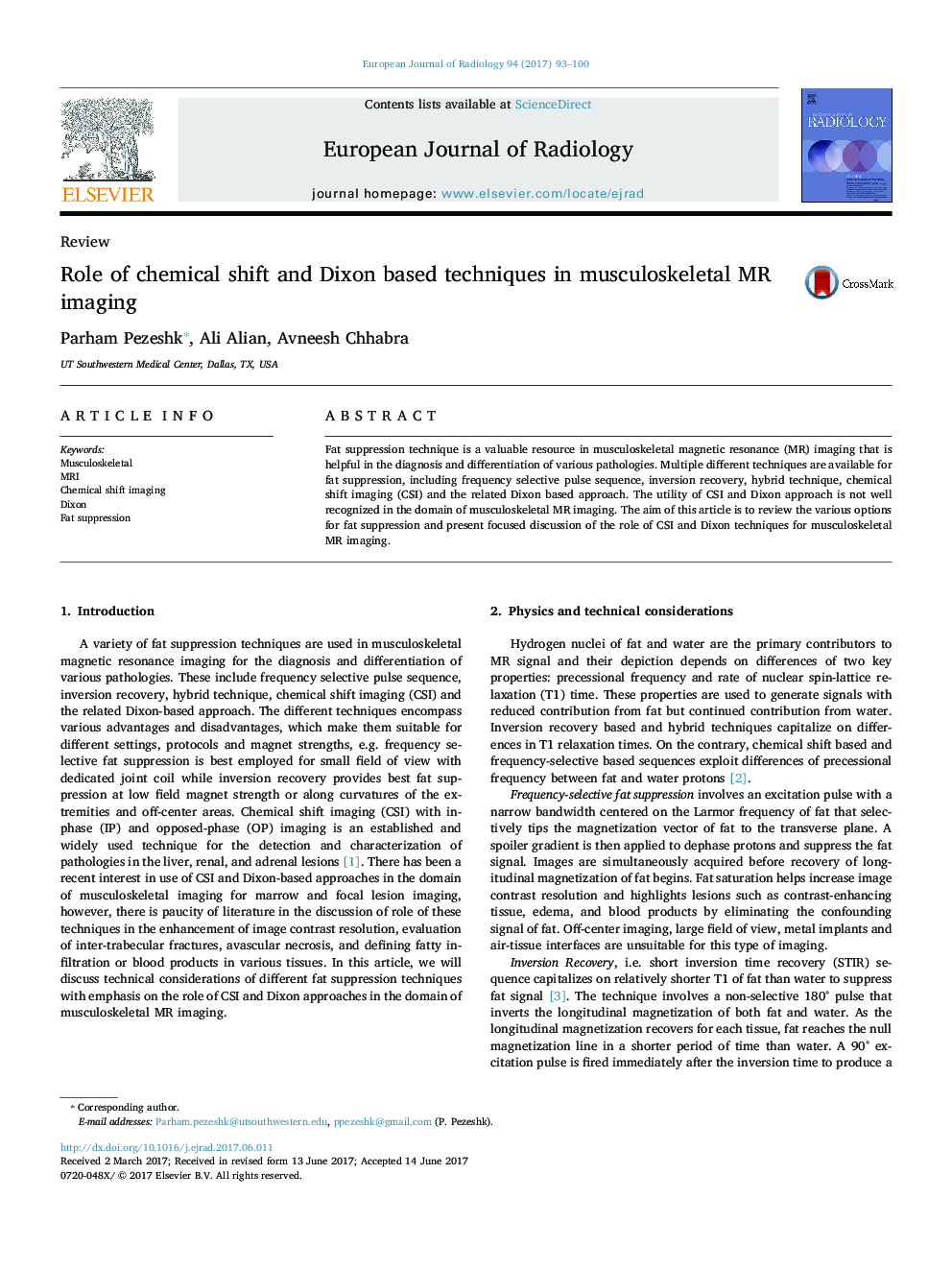| Article ID | Journal | Published Year | Pages | File Type |
|---|---|---|---|---|
| 5726262 | European Journal of Radiology | 2017 | 8 Pages |
â¢Chemical shift imaging or Dixon-based fat suppression techniques are very useful in the domain of musculoskeletal MR imaging.â¢Differentiation of benign from malignant marrow lesions is possible on chemical shift imaging.â¢Bone lesion conspicuity e.g. granuloma, fracture and sclerosis is enhanced on opposed phase imaging.â¢Bone marrow lesion healing can be identified as loss of signal on opposed phase imaging.â¢Hemosiderin detection in areas of hemorrhage or pigmented villonodular synovitis is conspicuous on in-phase imaging.
Fat suppression technique is a valuable resource in musculoskeletal magnetic resonance (MR) imaging that is helpful in the diagnosis and differentiation of various pathologies. Multiple different techniques are available for fat suppression, including frequency selective pulse sequence, inversion recovery, hybrid technique, chemical shift imaging (CSI) and the related Dixon based approach. The utility of CSI and Dixon approach is not well recognized in the domain of musculoskeletal MR imaging. The aim of this article is to review the various options for fat suppression and present focused discussion of the role of CSI and Dixon techniques for musculoskeletal MR imaging.
